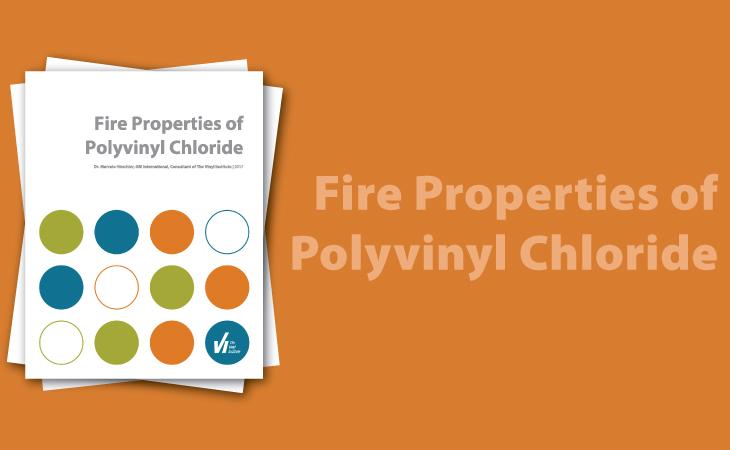This website uses cookies so that we can provide you with the best user experience possible. Cookie information is stored in your browser and performs functions such as recognising you when you return to our website and helping our team to understand which sections of the website you find most interesting and useful.
News
Learn About the Fire Properties of PVC
Fire Properties of Polyvinyl Chloride examines the science behind why polyvinyl chloride (PVC, or vinyl) possesses excellent fire performance properties. It draws from multiple studies and both small-scale and full-scale tests to assess the fire properties of vinyl as well as its contribution to overall fire hazard.
For vinyl specifiers, this technical paper provides an evidence-based assessment of why vinyl is one of the safer materials when fire safety is an essential consideration. This paper looks at vinyl’s flammability, noting its difficult ignitability, excellent ease of extinction, low heat release and a host of other key factors. For example, the data show that vinyl is less flammable than most polymeric materials (natural or synthetic). It also shows that vinyl will not normally continue to burn unless a sizeable source of fire or heat remains present.
Additionally:
- The heat release rate of vinyl is lower than that of most combustible materials.
- When vinyl eventually burns, it both gives off less heat than most materials and gives off heat more slowly.
- The smoke produced by vinyl in small-scale tests is in the same range as many other materials.
- The smoke generated in full-scale fires is usually lower than that of many meterials because vinyl materials burn less than most other materials.
- The smoke toxicity from vinyl materials is similar to that of most commercial materials during combustion.
In sum, vinyl is a great choice of materials when fire safety is a factor. A key reason that it typically won’t burn once the source of fire or heat is removed is that PVC resin has 56.8% chlorine in its base polymer composition —and it is well known that chlorine is one of the few elements that confers good fire properties to a polymer.


